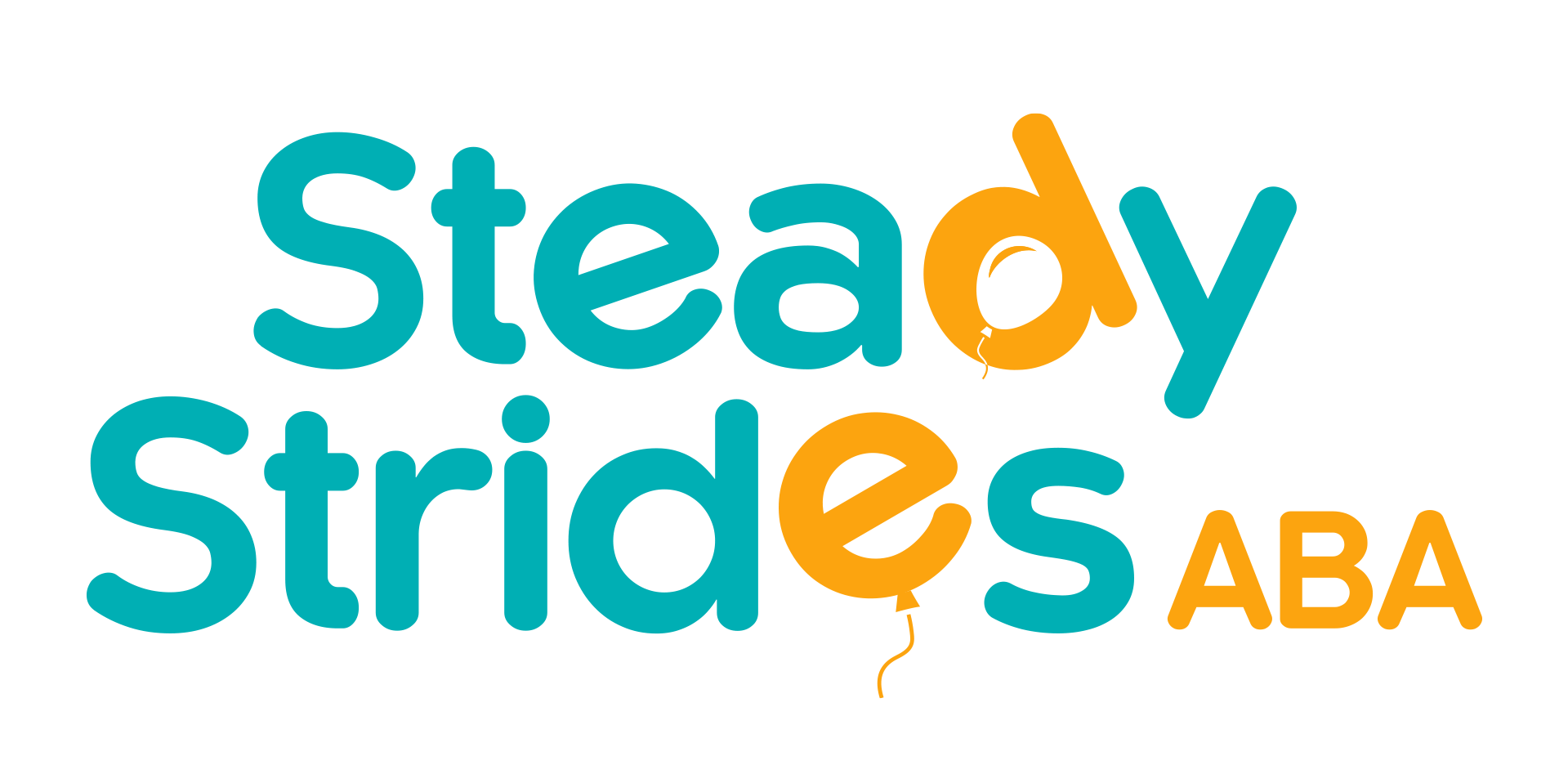Applied Behavior Analysis, or ABA, is a widely recognized and scientifically validated approach to understanding and improving human behavior, particularly among individuals with Autism Spectrum Disorder (ASD).
Defining ABA Therapy
ABA therapy is a method of therapy used to foster positive behavior change through a systematic process of intervention strategies. It's grounded in the principles of behaviorism, which asserts that behaviors can be learned and unlearned as a result of the consequences they produce. Central to ABA is the use of positive reinforcement to increase desirable behaviors and decrease unwanted ones, thereby help the child learns to develop functional skills and reduce maladaptive behaviors.
In clinical practice, ABA therapy is characterized by its personalized and goal-oriented nature. Interventions are tailored to the individual's unique needs, goals, and preferences, and can be applied in diverse settings, including the home, school, and community settings. The overall aim of ABA therapy is to help individuals with autism and other developmental conditions lead more independent and successful lives, both in the present and in the long run.
The Evolution of ABA Therapy
Since its inception over 30 years ago, ABA therapy has evolved significantly. Initially, the therapy was primarily utilized to alter observable behavior, but over time, it has expanded to address a variety of complex skills and issues, including communication, social interaction, and daily living skills. The evolution of ABA has been supported by continuous research, leading to a broader acceptance of its effectiveness and an increase in its application.
The development of ABA therapy techniques has been integral to its success. Techniques such as Discrete Trial Teaching (DTT), Naturalistic Teaching Strategies (NATS), and Functional Communication Training (FCT) are just a few examples of the strategies that have been refined over time to better meet the needs of individuals with autism. These techniques, and others, are part of a larger toolkit used by ABA professionals, like Board Certified Behavior Analysts (What is a BCBA?) and ABA therapists (What is an ABA therapist?), to create positive outcomes for individuals with ASD.
The progression of ABA therapy is also reflected in the growing number of professionals trained in these methods and the increasing accessibility of services, including in specific states like Texas. This expansion has not only allowed for greater reach but also for a more nuanced understanding of how ABA can be adapted to different cultural and regulatory environments.
For more information on the role of ABA professionals, check out the ABA therapist job description and details on ABA therapy for autism.
ABA Therapy Techniques
Applied Behavior Analysis (ABA) is renowned for its structured and evidence-based approaches to behavior modification, especially within the autism community. With a diverse range of ABA therapy techniques, practitioners are able to tailor interventions to meet the unique needs of each individual. Here, we delve into three core techniques integral to ABA therapy: Discrete Trial Teaching (DTT), Naturalistic Teaching Strategies (NTS), and Functional Communication Training (FCT).
1. Discrete Trial Teaching
Discrete Trial Teaching (DTT) is a cornerstone of ABA therapy. It is a highly structured method that breaks down complex skills into smaller, more manageable units of learning. This technique involves a clearly defined sequence: the therapist presents a cue or instruction, prompts the correct response if necessary, allows the individual to respond, and then provides appropriate reinforcement based on the response.
| Steps in DTT | Description |
|---|---|
| Instruction | Therapist presents a clear, concise command or question. |
| Prompt | Therapist provides assistance to encourage the correct response if needed. |
| Response | Individual performs the action or answers the question. |
| Reinforcement | Therapist delivers a reward or feedback based on the response. |
DTT is particularly effective in teaching basic skills and ensuring mastery through repetition and positive reinforcement. It's essential for therapists to customize the pacing and difficulty of the trials to align with the learner's capabilities and to maintain engagement.
Discrete trial teaching differs from naturalistic teaching strategies in that it involves breaking down skills into small, manageable steps presented in a highly controlled environment. The therapist provides clear prompts, delivers reinforcers for desired responses, and corrects errors immediately. This structured approach is particularly effective for teaching foundational skills and promoting accuracy.
2. Naturalistic Teaching Strategies
In contrast, Naturalistic Teaching Strategies (NTS) focus on embedding skill development within a child's natural environment and daily routines. NTS, encompassing methods like Natural Environment Teaching (NET) and Incidental Teaching, focus on learning within the individual's everyday environment. Unlike DTT, NTS emphasizes teaching in the context of natural activities and interactions, which helps individuals generalize skills across various settings and situations.
The primary goal of NTS is to make learning more spontaneous and engaging by incorporating it into daily routines. This could involve playing with toys, participating in community outings, or engaging in family activities. By capturing the individual's interests and motivations, NTS facilitates skill acquisition in a way that feels organic and relevant to the learner.
3. Functional Communication Training
Functional Communication Training (FCT) is a targeted ABA therapy technique aimed at developing effective communication skills. This approach is particularly beneficial for individuals who may exhibit challenging behaviors as a form of communication. FCT provides alternative, more appropriate ways to express needs, desires, and emotions.
The process of FCT involves identifying the function of the challenging behavior and then teaching an acceptable communicative behavior that serves the same purpose. For example, if a child throws toys to gain attention, the therapist might teach the child to use a word or gesture to request interaction instead.
FCT is a powerful tool in reducing problematic behaviors and enhancing the individual's ability to interact with others. It is often combined with other ABA strategies, like pivotal response treatment (PRT) or verbal behavior therapy, to create a comprehensive communication-focused program.
4. Video Modelling
Video modeling is a technique in ABA therapy where a child watches videos of someone else demonstrating a desired behavior. This could be anything from social interaction skills like greeting a friend to daily living activities like brushing teeth. By observing successful completion of the target behavior, the child is then encouraged to imitate it. This visual learning approach can be highly effective in teaching new skills and promoting positive behavior changes in children with autism.
ABA therapy techniques such as DTT, NTS, and FCT are integral to the field and provide a framework for practitioners to support individuals with autism and related conditions. Understanding the nuances of these strategies is essential for ABA professionals, which is why learning about BCBA and ABA therapist roles can be incredibly valuable. These roles are critical in designing and implementing these techniques to ensure the best possible outcomes for those receiving ABA therapy.
Role of ABA Professionals
The implementation of ABA therapy techniques is carried out by dedicated professionals who specialize in behavior analysis. Understanding the roles of these experts is crucial for anyone involved in the therapy process, from parents to educators.
The BCBA Explained
A Board Certified Behavior Analyst (BCBA) is a professional with certification in applied behavior analysis. BCBAs are responsible for the assessment of behavior, the development and implementation of intervention plans, and the evaluation of the effectiveness of the ABA therapy. They possess advanced knowledge in the principles of ABA and are skilled in creating tailored treatment plans for individuals with Autism Spectrum Disorder (ASD) and related conditions.
To become a BCBA, one must meet rigorous academic and professional training standards, including a graduate degree, relevant coursework, supervised experience, and passing a comprehensive exam. BCBAs often lead a team of ABA therapists, providing supervision and guidance to ensure high-quality therapy delivery.
The ABA Therapist's Function
An ABA therapist works directly with individuals receiving ABA therapy, implementing the treatment plans developed by the BCBA. Their function includes conducting therapy sessions, collecting data on the individual's progress, and adjusting strategies as needed under the supervision of the BCBA.
ABA therapists use various evidence-based methods to encourage positive behavioral changes. These methods include but are not limited to Discrete Trial Teaching (DTT), Naturalistic Teaching Strategies (NET), and Functional Communication Training (FCT). Each technique is selected and customized based on the unique needs and abilities of the individual receiving ABA therapy.
For instance, the Antecedent-Behavior-Consequence (ABC) approach is a mainstay in ABA therapy, helping to target and improve specific behaviors by altering environmental factors, responses, and reward systems. ABA therapists play a pivotal role in applying these techniques during therapy sessions to enhance key skills such as communication, social interaction, and independence.
Given the variety of ABA therapy techniques available, ABA therapists are trained to determine the most effective methods for each individual.
The ABA professional's role is multifaceted and requires a combination of specialized knowledge, compassion, and adaptability. With the right ABA team in place, individuals with ASD can make significant strides in various areas of development.
ABA in Texas
As a therapeutic approach tailored for individuals with Autism Spectrum Disorder (ASD) and related conditions, Applied Behavior Analysis (ABA) therapy is governed by specific regulations that differ by state. In Texas, understanding these regulations and how to access ABA services is crucial for those seeking support.
State-Specific Regulations
In Texas, ABA therapy falls under the scope of behavior analysis, which is regulated by the Texas Health and Human Services Commission (HHSC). To ensure the highest standards of practice, Texas requires practitioners to be licensed as behavior analysts. These requirements are in place to protect the public and ensure that those receiving ABA therapy obtain services from qualified professionals.
The state of Texas recognizes Board Certified Behavior Analysts (BCBAs) as the primary professionals who can provide and supervise ABA therapy. Additionally, ABA therapists, who work under the supervision of BCBAs, are essential in delivering therapy.
Accessing Services in Texas
For families and individuals in Texas seeking ABA therapy, several avenues are available:
- Private Insurance: In some cases, private health insurance policies cover ABA therapy. It's essential to review one's policy or speak to the insurance provider to understand the coverage details.
- Texas Medicaid: The Texas Medicaid & Healthcare Partnership (TMHP) may provide coverage for ABA therapy for eligible individuals under the age of 21.
- School Systems: Public schools may offer ABA therapy as part of an individualized education program (IEP) for students with ASD.
- Private Clinics and Centers: Numerous private clinics across Texas provide ABA therapy. These centers often have BCBAs and ABA therapists on staff to create and implement treatment plans.
When exploring options for ABA therapy for autism, it's crucial to consider the qualifications of the provider, the setting that best suits the individual's needs, and the financial aspects involved.
To navigate the process, families and individuals can also consult with advocacy groups, local autism support networks, or educational consultants who specialize in ASD. These resources can provide guidance on state-specific regulations, how to access services, and how to advocate for the necessary support within the Texas education system.
Understanding the regulatory landscape and the options available for accessing ABA services in Texas is the first step towards obtaining the necessary support. With the right information and resources, families and individuals can make informed decisions about ABA therapy and take proactive steps to improve outcomes for those with ASD.
ABA Therapy Outcomes
Applied Behavior Analysis (ABA) therapy aims to foster significant improvements in various developmental areas for individuals with Autism Spectrum Disorder (ASD) and related conditions. This section examines the outcomes of ABA therapy, specifically focusing on enhancements in communication, social interactions, play skills, and daily living and independence.
1. Improvements in Communication
One of the key goals of ABA therapy is to develop and enhance communication skills. Effective communication is fundamental for expressing needs, desires, and emotions. According to research summarized by
Autism Speaks, ABA therapy has been instrumental in improving both verbal and non-verbal communication in individuals with autism.
| Outcome | Impact |
|---|---|
| Expressive Language | Increased ability to express wants and needs |
| Receptive Language | Improved understanding of spoken language |
| Non-verbal Communication | Enhanced use of gestures and alternative communication methods |
ABA therapy for autism focuses on teaching essential communication skills, which can range from simple requests to more complex conversations. Through techniques such as Functional Communication Training and Discrete Trial Teaching, individuals learn to articulate their needs more effectively, leading to a better quality of life.
2. Social Interactions and Play Skills
Social interactions and play are vital for the overall development of a child with ASD. ABA therapy employs strategies to enhance these skills, facilitating better engagement with peers and family members. The use of ABA therapy in teaching social norms, turn-taking, sharing, and participating in group activities, which are crucial for social development.
Results from interventions show promising outcomes for socialization:
| Outcome | Impact |
|---|---|
| Socialization | Improved interaction with peers and adults |
| Play Skills | Increased participation in cooperative and imaginative play |
These improvements not only help children with ASD to form friendships but also contribute to their emotional well-being and community integration.
3. Daily Living and Independence
Daily living skills encompass a wide range of functional abilities, from self-care to navigating various life situations. ABA therapy techniques are tailored to equip individuals with the skills necessary for greater independence. According to
PubMed, ABA interventions have been effective in teaching a variety of life skills, although outcomes can vary based on individual factors.
| Skill Area | Impact |
|---|---|
| Self-Care | Increased competence in personal hygiene and dressing |
| Daily Tasks | Improved ability to perform household chores and routines |
| Self-Help | Enhanced self-management and problem-solving skills |
By focusing on these key areas, ABA therapy helps individuals with ASD to navigate life with increased autonomy and confidence.
ABA therapy, through its structured and individualized approach, has proven to be an invaluable resource for those on the autism spectrum. The outcomes of this therapy can lead to transformative changes, significantly impacting the lives of individuals with ASD and their families.
Tailoring ABA Interventions
Applied Behavior Analysis (ABA) therapy is not a one-size-fits-all approach. Tailoring interventions is essential to meet the unique needs of individuals with Autism Spectrum Disorder (ASD) and related conditions. This process involves creating individualized treatment plans and utilizing setting-based strategies to ensure the therapy is effective and relevant to the individual's life.
1. Individualized Treatment Plans
ABA therapy techniques are highly customizable to align with the specific needs, goals, and preferences of each individual. ABA professionals, including Board Certified Behavior Analysts (BCBAs), play a pivotal role in developing these treatment plans. They conduct thorough assessments to identify target behaviors and skills that need development or modification.
The individualized treatment plans are constructed using the Antecedent-Behavior-Consequence (ABC) approach. This method involves breaking behaviors down into sequences and making targeted changes to the individual's environment, responses, and reward systems. For instance, if the goal is to improve communication, the plan may include steps like:
- Identifying situations where communication is needed
- Teaching specific communication skills
- Reinforcing successful communication attempts
The intensity and duration of therapy can vary depending on the individual's symptom severity, with the overall aim of enhancing key life skills and fostering greater independence.
2. Setting-Based Strategies
ABA therapy can be implemented in various settings such as homes, schools, clinics, and community locations. This flexibility ensures that the individual can practice and generalize skills in the environments where they are most needed.
| Setting | Focus Area |
|---|---|
| Home | Daily living skills, family interaction |
| School | Academic skills, social interaction |
| Community | Social norms, adaptive behavior |
For each setting, ABA therapists may employ different strategies to address the individual's behavioral challenges effectively. For example, in a school setting, the therapist might collaborate with educators to integrate ABA therapy into the student's Individualized Education Plan (IEP).
Furthermore, the role of ABA therapists is to adapt their techniques to each setting, ensuring consistency and continuity of care. They may also provide training to caregivers and school personnel to support the individual's development across different contexts.
By tailoring ABA interventions through individualized treatment plans and setting-based strategies, ABA professionals help individuals with ASD to achieve meaningful improvements in various aspects of their lives. The success of ABA therapy hinges on the careful alignment of therapeutic goals with the individual's unique circumstances, a task that requires both skill and compassion.
Challenges and Considerations
While Applied Behavior Analysis (ABA) therapy is a highly regarded approach for individuals with Autism Spectrum Disorder (ASD), there are significant challenges and considerations to take into account. The cost of therapy and its accessibility are among the primary concerns, while the quality of life and efficacy of the interventions are also critical factors to evaluate.
1. Cost and Accessibility
The financial burden of ABA therapy can be substantial for families. Interventions may range from approximately $1.4 million to $2.4 million, varying with the presence of an additional intellectual disability. This cost can create a barrier for many families, limiting access to these essential services. It is imperative to understand the economic impact and explore potential funding sources or insurance coverage that may alleviate some of the financial strain.
| Condition | Average Lifetime Cost |
|---|---|
| ASD Only | $1.4 million |
| ASD with ID | $2.4 million |
Additionally, the availability of ABA services can be a challenge, particularly in rural or underserved regions. Access to qualified professionals like Board Certified Behavior Analysts (BCBAs) and ABA therapists can vary significantly by location.
2. Quality of Life and Efficacy
The efficacy of ABA therapy is well-documented, with numerous studies supporting its effectiveness in improving communication, social skills, and daily living abilities for individuals with ASD. However, there is a growing need for large-scale prospective studies that compare ABA interventions with other non-ABA interventions and include measurements of quality of life. Such studies could offer valuable information to policymakers and those considering ABA therapy.
Quality of life is an essential metric not only for individuals undergoing therapy but also for their families. Ensuring that ABA interventions lead to meaningful improvements in everyday life is crucial. Studies that examine the long-term outcomes and personal satisfaction of those receiving ABA therapy can provide a more comprehensive view of its impact.
As the field of ABA continues to evolve, it is vital to address these challenges and considerations to make ABA therapy for autism more accessible, affordable, and effective. Exploring different funding models, advocating for insurance coverage, and conducting extensive research on the long-term efficacy and quality of life improvements are necessary steps in ensuring that ABA therapy remains a viable and beneficial option for those with ASD and related conditions.
Conclusion
ABA therapy offers a powerful toolbox of techniques for fostering positive change in individuals with autism. By understanding these techniques and their applications, you can gain valuable insight into how ABA therapy can empower individuals to reach their full potential.
At Steady Strides ABA, we believe in the transformative power of ABA therapy tailored to each child's unique needs. Our team of passionate and experienced therapists in Texas utilizes a comprehensive range of ABA techniques to address core challenges, build essential skills, and promote lasting progress. We collaborate closely with families and caregivers to ensure a consistent and supportive environment for optimal results.
Contact Steady Strides ABA today and embark on a journey of transformation for your children with autism.
SOURCES:
https://www.autismspeaks.org/applied-behavior-analysis
https://online.regiscollege.edu/blog/aba-therapy-examples/
https://masteraba.com/aba-teaching-methods/
https://www.webmd.com/mental-health/what-is-applied-behavior-analysis
https://www.ncbi.nlm.nih.gov/pmc/articles/PMC9458805/













